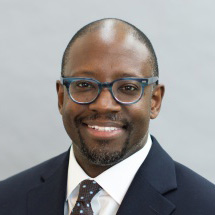One of the realities of using race to socially engineer the racial make-up of college freshman classes by elite decision-makers, is that it does nothing but perpetuate the injustice of institutional and planned discrimination. This is the greatest irony of affirmative action education policy. The attempt to redress past injustices does nothing but set the stage for new forms of injustice against other groups.
Today, Asian-American high-school students are faced with the reality that, if they are high achievers, top schools do not want too many of them. In fact, checking “Asian-American” on your college admissions application can prove to be a real liability.
James Liu, a student at Amherst College, expresses the ongoing tensions regarding Asian-American students in The Amherst Student, an independent student newspaper at the college, by telling us a story about a friend:
My friend was, for lack of a better term, a statistical aberration. He possessed a bizarre talent for shading in bubbles. On his first sitting, he clocked a perfect score of 2400 on the SAT Reasoning Test. No one-hit wonder, by the end of junior year, he had added perfect scores of 800 on two SAT Subject Tests and 5’s on eight AP exams to his repertoire. With a 4.0 GPA, multiple club leadership positions and an amicable character, he was well regarded by both his teachers and peers. Needless to say, his college expectations were high.
Then, April came. The initial blow was more of a curious surprise than an outright disappointment. My friend was waitlisted by Harvard, Yale, Princeton and Dartmouth, his four top college choices. Remaining optimistic, he would joke that the waitlist is even more selective than the admitted class, after all, the odds of being waitlisted by all four schools was smaller than being admitted to any given one. After that, however, it was a slow defeat by attrition. That year, Princeton accepted zero students of its waitlist. Harvard accepted about only 25. Eventually, Yale and Dartmouth bid their farewells, and in the end, he was rejected by all but one of the schools that he applied to regular decision.
Why would someone be wait-listed at Harvard with test scores like this? Honesty demands that we all admit that if a black student had applied to Harvard with those exact same test scores, I doubt we would be reading about her being wait-listed. Liu highlights the following data from his research:
In “The Opportunity Cost of Admission Preferences at Elite Universities”, Thomas J. Espenshade and Chang Y Chung of Princeton Univ. state, “African-American applicants receive the equivalent of 230 extra SAT points (on a 1600-point scale), and being Hispanic is worth an additional 185 SAT points. Other things equal, recruited athletes gain an admission bonus worth 200 points, while the preference for legacy candidates is worth 160 points. Asian-American applicants face a loss equivalent to 50 SAT points. In another 2009 study of more than 9,000 students who applied to selective universities, Espenshade along with Alexandria Walton Radford found that “white students were three times more likely to be admitted than Asians with the same academic record”.
In the end, Lui asks a provocative question, “how does preferential admissions treatment for an applicant whose parents immigrated from Argentina in the 1990s do anymore to remedy the vestiges of historic immigration than providing that same treatment to an applicant whose Japanese grandfather was interned during World War II, or whose great-grandmother was prohibited from attending an all-white high school in Mississippi (Lum v. Rice) or whose Filipino grandfather could not marry the woman he loved because a 1953 Utah statute declared marriage between a ‘white and…Malayan…void?'”
This is a great question, and many of us are unsure how those in favor of race-based preferential treatment in college admissions would make such a distinction. In an effort to move beyond this, Lui concludes that affirmative action should be based on class and not race because “race is an inadequate indicator of disenfranchisement. The best indicator that a person suffers from present and historic discrimination is persistent poverty.” On the surface this may seem more helpful but the underlying paternalism behind this view may not be as helpful as one might imagine. Institutional classism is not better than institutional racism.
Unfortunately, exchanging class for race does not solve the riddle either because schools will still discriminate against people on the basis of reported household income–this is still institutional discrimination. Preferential treatment by class only means that high-achieving students who were born, by no fault of their own, into higher-income families will be treated unfairly. This is not justice. Why should high-achieving students from upper-income families be penalized because of providence?
We must also keep in mind that families move in and out of classes over time. There is no way to accurately determine the “class” of any given applicant without more discrimination. A laid-off corporate executive could technically qualify as “lower-class” because, in America, we generally judge class on the basis of income. I can only imagine all of the perverse incentives this would create for families to find a way to appear poor on paper in order to increase the chances of their children being admitted to an elite school.
It seems that what would be best for college admissions is a world without any imposed preferential treatment on the basis of race or class. If this means, for example, that Harvard and Yale end up being 80 percent Asian-American then it is what it is. If high-achieving students want to attend schools that are not as competitive but have more ethnically diverse populations, those schools would gladly welcome them. It would be a trade-off for sure, but one in which everyone is treated equally, because using discrimination to redress discrimination does nothing but perpetuate the injustice of discrimination.

